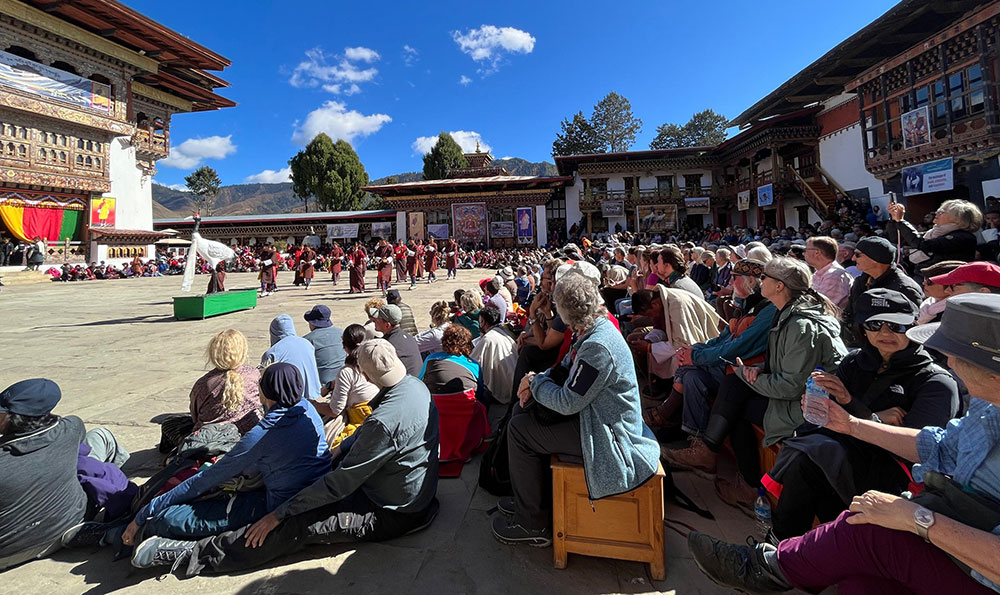More than 600 tourists attend the festival this year
Chencho Dema
Gangtey—The annual Black-necked Crane Festival, held on November 10-11 at Gangtey Gonpa Monastery in Wangdue, attracted thousands of visitors, including more than 600 tourists this year.
The festival is celebrated to honour the Birth Anniversary of the Fourth King His Majesty Jigme Singye Wangchuck and mark the arrival of the Black-necked Cranes. This year’s festival was particularly special, as it marked the 25th anniversary of the event.
Originally a one-day event, the festival was extended to two days to commemorate its Silver Jubilee, attracting a record number of visitors. More than 100 regional tourists and 500 international visitors attended the festival, a significant increase from previous years.
Organisers attribute this increase to promotional efforts by the Department of Tourism and travel agents, as well as the festival’s growing popularity among tourists and their interest in the endangered Black-necked Crane.
The festival features cultural programmes, including folk songs, environmental songs, and traditional mask dances performed by monks, locals, and school children. The highlight of the festival is the popular ‘crane dance’ in which school children perform dressed as cranes.
The festival is organised by the Gangteng-Phobji Environment Management Committee (GPEMC). The festival was launched by the Royal Society for Protection of Nature, as part of its Integrated Conservation and Development Program (ICDP).
The first celebration was held near the old school in the heart of the valley in 1998, but it was moved to the more spacious Gangtey Gonpa in 2005 to accommodate growing crowds.
Starting in 2013, the organisers introduced an entry fee for tourists to help sustain and improve the event. SAARC nationals are charged Nu 250, while international tourists pay Nu 500.
The monastery courtyard was packed to capacity. Many tourists stood throughout the event, while a few found space to sit on the ground. Some guides and tourists expressed frustration about not securing proper seating despite paying the entrance fee.
A cultural guide accompanying two tourists from Germany said that if organisers charge tourists an entry fee, they should also ensure adequate seating. “There weren’t enough chairs,” he said, “there is a need for better arrangement.”
Another guide echoed this sentiment, adding that one of his elderly guests struggled to stand throughout the event.
Some of the tourists suggested designating a place for the tourists.
A 55-year-old tourist from France, who travelled to Bhutan specifically to witness the festival, said: “It was a wonderful experience, and Bhutan is doing great work protecting the cranes. But standing for hours after paying the entry fee wasn’t ideal. Even a mat on the floor would have been a better solution.”
Phobji Gup Jamtsho, a member of the GPEMC, said that chairs and floor benches had been arranged from the two gewogs of Gangtey and Phobji, but they had not anticipated such a large influx of tourists.
“We feel bad and disappointed, but we are ensuring that they are given priority,” he said. “Next year, we will make sure that no tourist has to stand or complain about seating. We will provide proper seating arrangements for everyone.”
Meanwhile, some visitors suggested moving the festival to an open ground in the valley, as the current location becomes increasingly crowded with each passing year.
The first group of Black-necked Cranes, comprising five adults, arrived on November 5 this year. Phobjikha valley is one of the main winter roosting habitats for the cranes in the country.


